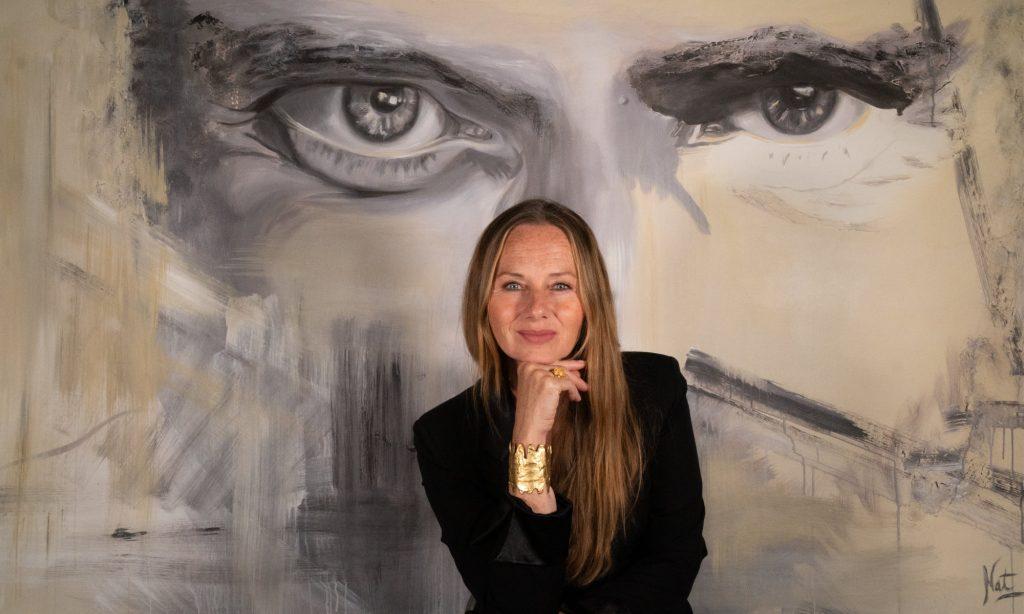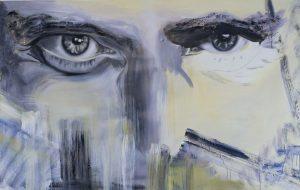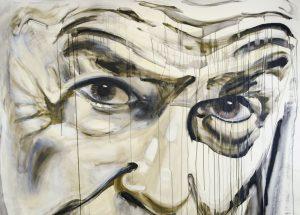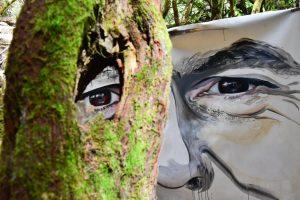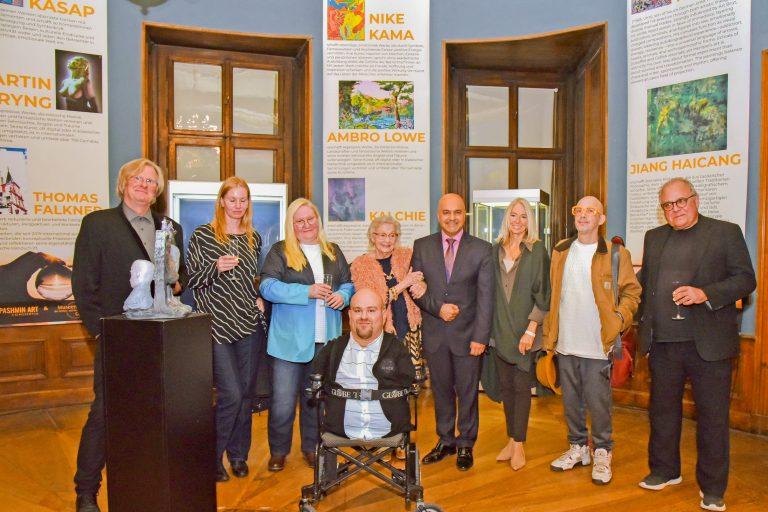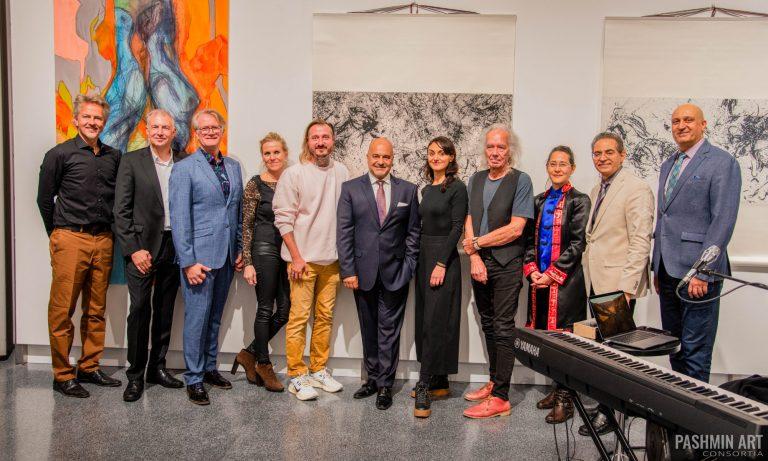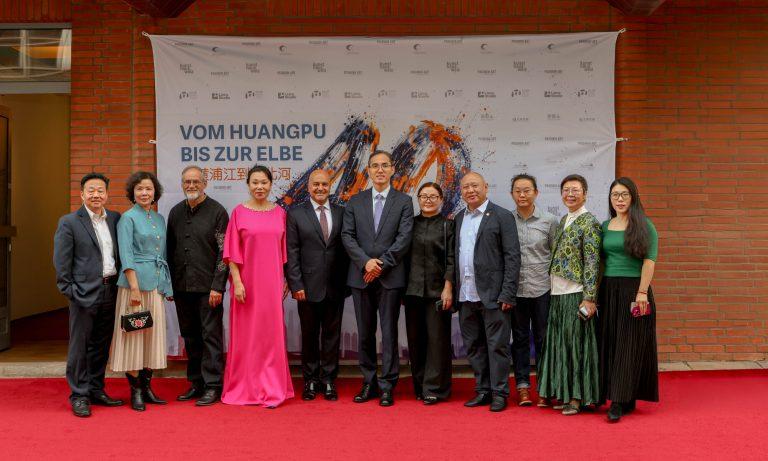Beginnings and Artistic Career
Nathalie Bopp, born March 18, 1968, is a distinguished artist whose lifelong dedication to color, form, and environmental themes has shaped a rich and evolving career. Growing up in Poitiers, France, Bopp began painting classes at age three and pursued formal art education through her teens, including rigorous training under Professor Claud Husson and attendance at the Art Academy, Beaux Arts. Excelling academically, she earned top honors in her 1987 Art Studies exam and pursued further education in economics and art history, including studies at the prestigious Ecole du Louvre in Paris.
Launching her professional career as a freelance artist in Germany in 1992, Bopp exhibited widely across Europe. Her creative horizons expanded significantly during a pivotal residency in Abidjan, Ivory Coast (2002–2003), where she exhibited at the Centre Culturel Français. Upon returning to Germany, she shifted focus toward evocative portraiture, particularly close-up depictions of eyes and faces, deeply influenced by her African experiences. These portraits, called “Heroes,” convey resilience, strength, and profound human connection.
Her artistry was further enriched by Master Classes with the Zhou Brothers at the Salzburg International Summer Academy of Fine Arts (2009 and 2011), where abstraction and emotional intensity became integral to her style. Today, Bopp continues as a freelance artist, creating compelling works that explore the emotional depths of humanity.
The Early Foundations of Color and Form
Bopp’s fascination with color began early. Discovering how mixing a few primary colors with white could yield countless hues, she developed a language through color that conveyed emotional responses and deep connections to nature. Her painting process centers on presence and intuition—eschewing rigid planning in favor of spontaneous discovery. This mindfulness fosters an organic flow that allows her inner world to emerge on canvas, influencing both her abstract and figurative work.
A Global Perspective: Influences from Travel and Culture
Bopp’s extensive travels and residencies in the United States, Morocco, India, Canada, and other African countries have broadened her worldview and enriched her subconscious artistic language. These experiences did not alter her fundamental approach but infused her work with new cultural perspectives, colors, and forms. A turning point was her time in Africa, which spurred a shift from abstraction to portraiture—specifically focusing on eyes, symbolizing identity, strength, and shared human experience.
The Evolution of Style: Abstraction, Portraits, and New Directions
Throughout her career, Bopp has embraced various styles to explore emotional and thematic landscapes. Her early abstract works evoke the essence of nature through vibrant colors and dynamic shapes, offering sensory experiences rather than literal depictions. Portraiture, especially the focus on eyes, became central post-Africa, inviting viewers to engage intimately with the subject’s inner life.
The “Little People” series introduced calligraphic, spontaneous figures symbolizing families and couples, emphasizing the interconnectedness and harmony of human relationships. This series reflects Bopp’s belief in the fundamental importance of connection.
Her recent series, “The Fullness,” features layered points and colors symbolizing abundance and the complex inner richness of individuals. This technique adds philosophical depth, suggesting identity as a multifaceted, lived experience.
Environmental Activism Through Art
Environmental consciousness is a core pillar of Bopp’s work. She uses her art as a platform to raise ecological awareness, often situating installations in natural environments—such as hanging paintings between trees or building outdoor wooden structures. These immersive experiences encourage reflection on the relationship between art and nature.
Beyond visual expression, Bopp actively engages with sustainability advocates. Her Dubai project, which involved interviewing and painting portraits of environmentalists, honors their efforts and urges viewers to consider their own environmental responsibilities. Through this, she merges artistry with activism, making ecology a visible and urgent theme in her practice.
The Future of Nathalie Bopp’s Art
Looking ahead, Bopp intends to expand her experimentation with techniques and materials. She plans to work more extensively with oil paints, particularly in portraits to enhance realism and depth, focusing on the expressive power of the eyes. Her intention to paint one eye instead of two introduces mystery and invites viewer interpretation. The “Little People” series will be explored on larger canvases to heighten impact.
She is open to incorporating unconventional textures like sand, further pushing creative boundaries. Yet, her core focus remains on the expressive capacity of color and form, blending innovation with environmental and emotional consciousness.
Conclusion
Nathalie Bopp’s work is a profound journey through color, form, and the natural world. Her paintings, installations, and portraits embody deep human relationships, ecological awareness, and the power of art to evoke reflection and change. Her ongoing evolution as an artist affirms the transformative potential of creativity in personal and societal contexts. Bopp’s dedication to beauty, humanity, and nature ensures her art will continue to inspire, challenge, and engage audiences for years to come.
© Copyright of the text belongs to Dr. Davood Khazaie
